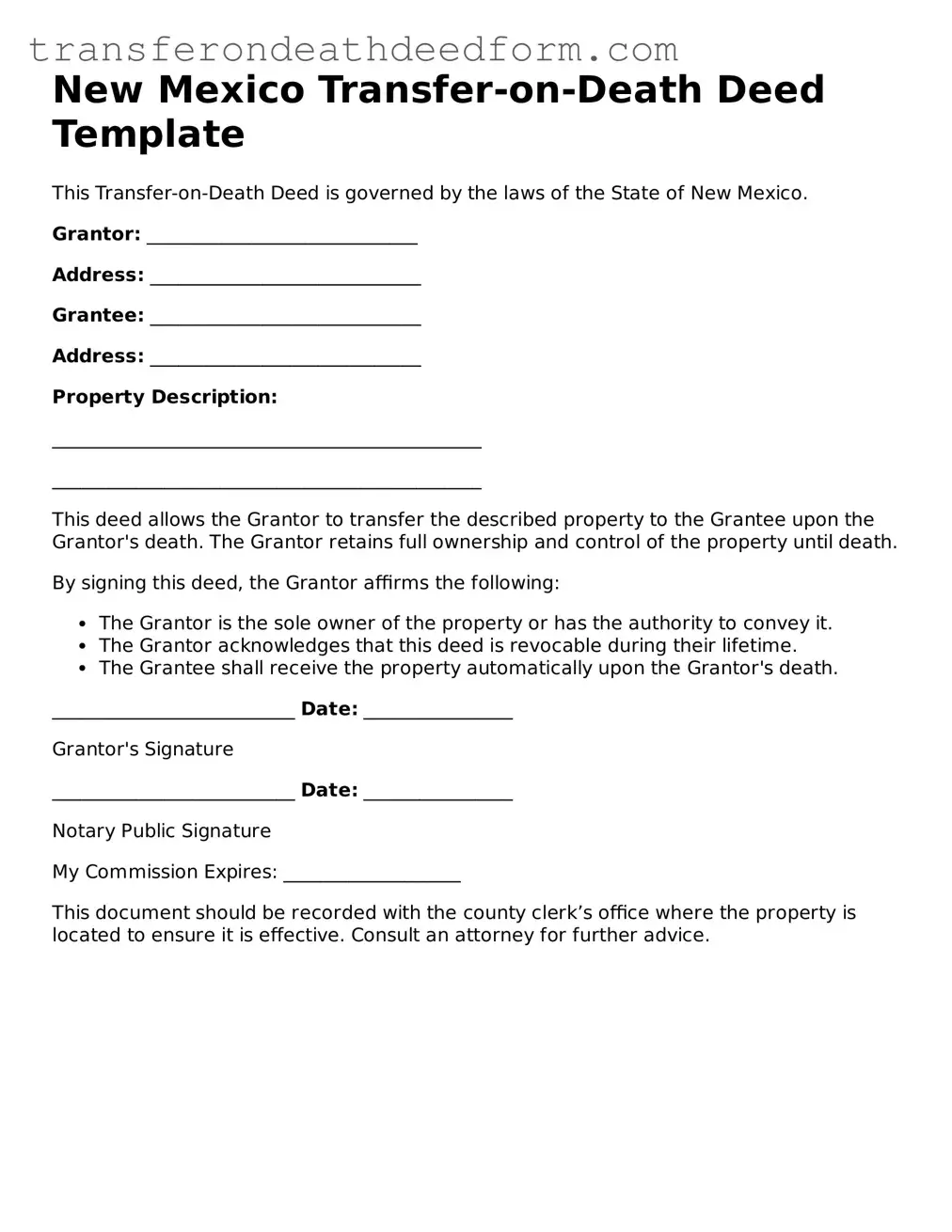New Mexico Transfer-on-Death Deed Template
This Transfer-on-Death Deed is governed by the laws of the State of New Mexico.
Grantor: _____________________________
Address: _____________________________
Grantee: _____________________________
Address: _____________________________
Property Description:
______________________________________________
______________________________________________
This deed allows the Grantor to transfer the described property to the Grantee upon the Grantor's death. The Grantor retains full ownership and control of the property until death.
By signing this deed, the Grantor affirms the following:
- The Grantor is the sole owner of the property or has the authority to convey it.
- The Grantor acknowledges that this deed is revocable during their lifetime.
- The Grantee shall receive the property automatically upon the Grantor's death.
__________________________ Date: ________________
Grantor's Signature
__________________________ Date: ________________
Notary Public Signature
My Commission Expires: ___________________
This document should be recorded with the county clerk’s office where the property is located to ensure it is effective. Consult an attorney for further advice.
